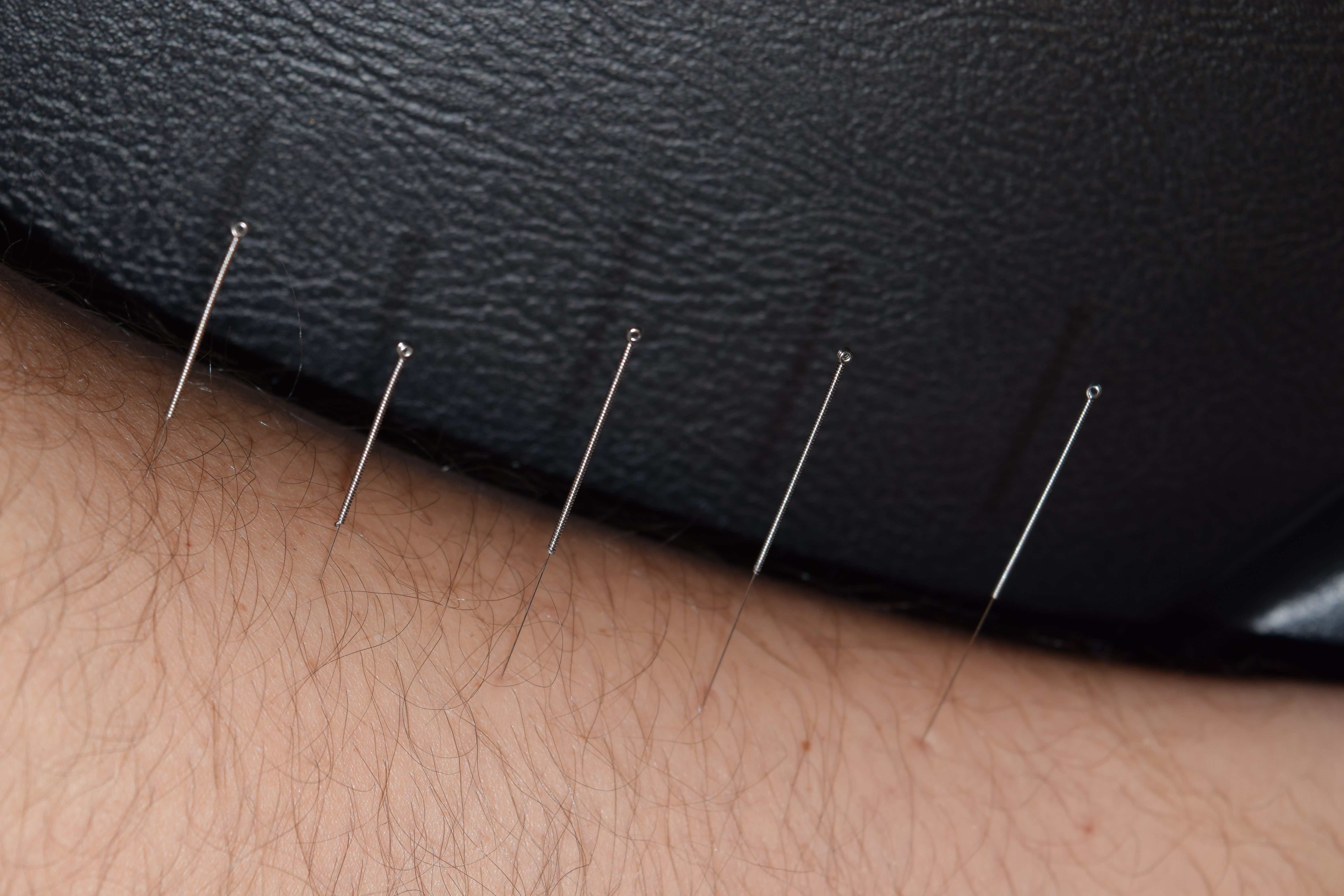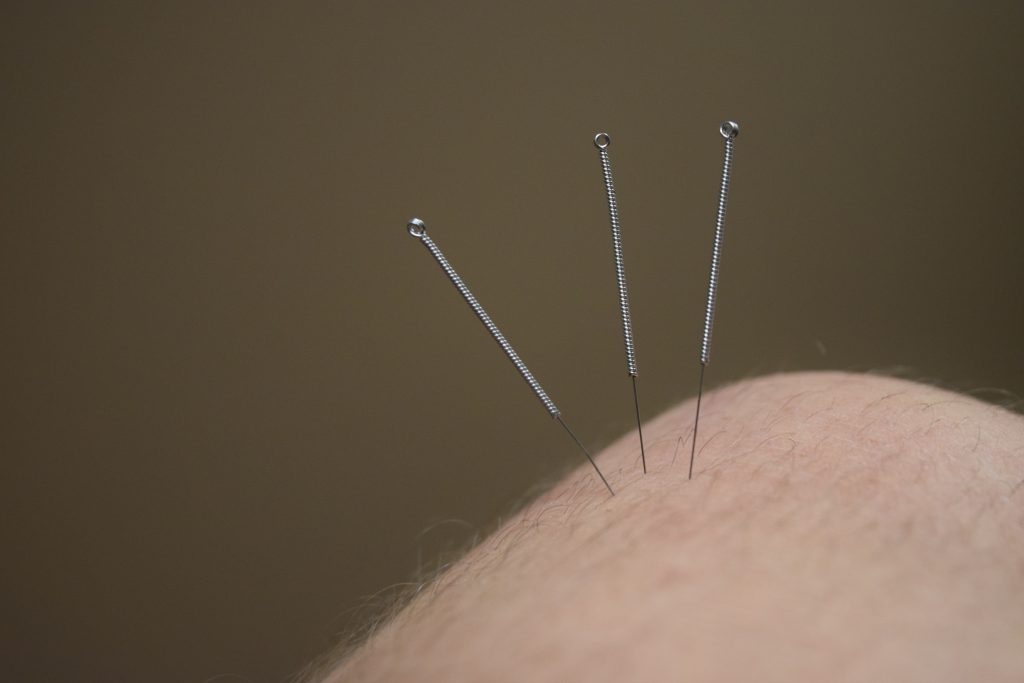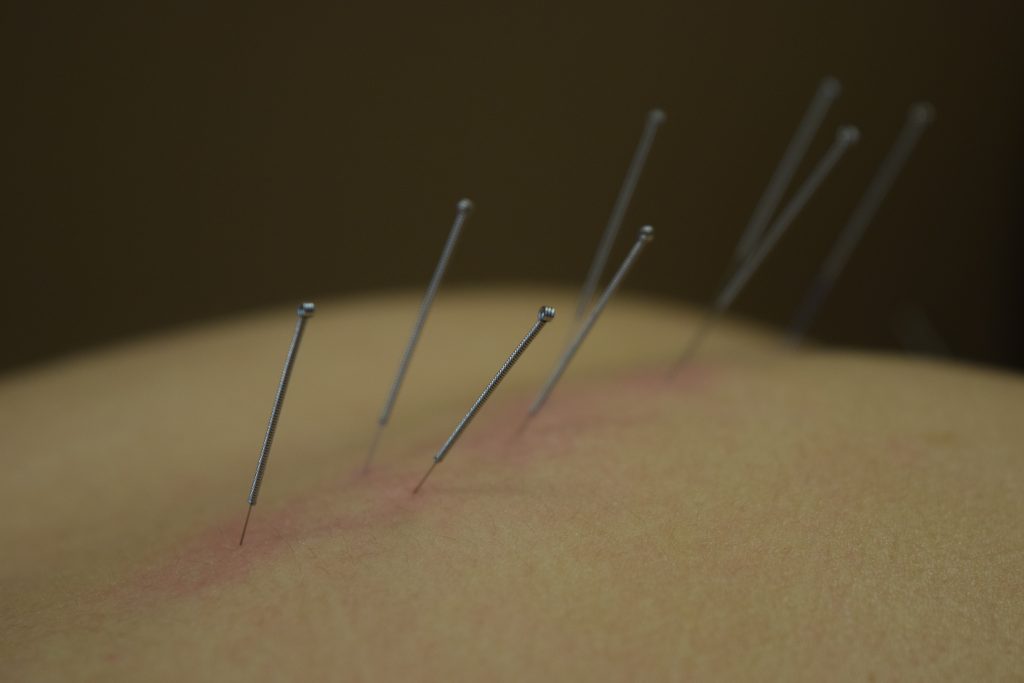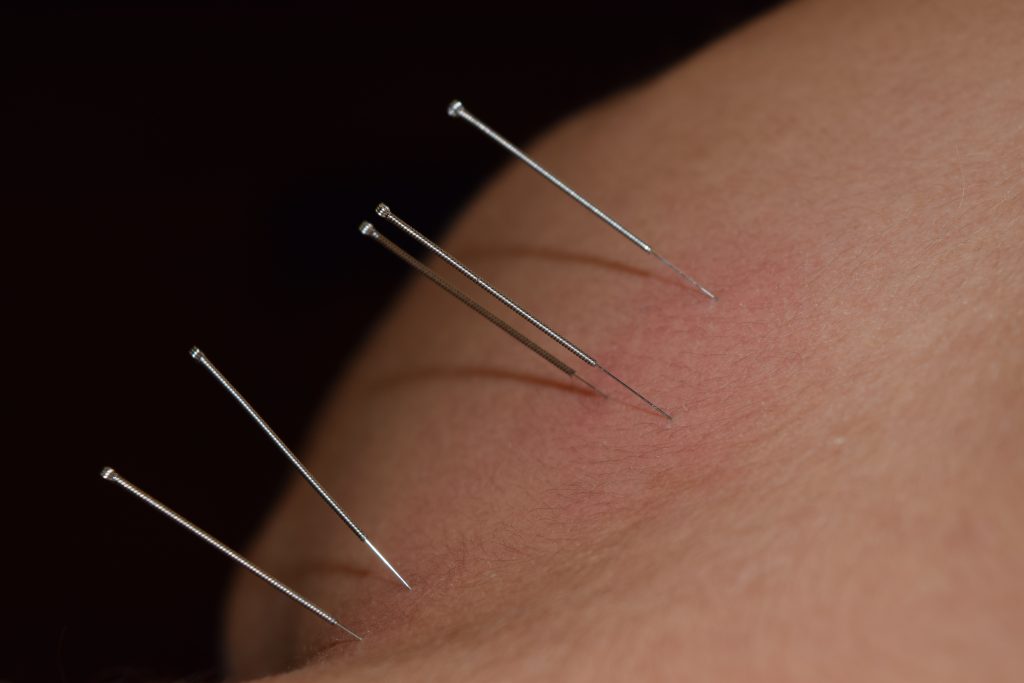 We are excited to announce…
We are excited to announce…
Dry Needling is now being offered as a treatment
at Davis Chiropractic
Dry Needling is a painless, drug free, way to relieve tension in deep stubborn trigger points in muscles. A thin filiform needle is used to penetrate the skin and penetrates into deeper muscle layers to stimulate a healing response.
 What conditions can be helped from Dry Needling?
What conditions can be helped from Dry Needling?
- Tense muscles
- Body pain
- Headaches
- Fibromyalgia
- Pain from failed back/spine surgeries
- and much more!
Practically any area that hurts due to a tense muscle or tendon can be treated with Dry Needling!
How it works:
After a thorough history and exam, Dr. Davis will examine the spine and search for the most noticeable trigger point and tight muscle bands. Problem areas are marked if necessary and the entire area is sanitized with alcohol. The patient is placed into a comfortable position and the needles are placed beginning with the worst areas. If one needle happens to cause a small twitch, several more are placed in close proximity to help treat the entire trigger point. Feedback from the patient is helpful in determining what areas are tender from the needle. Different areas of the same region may be treated depending on how the muscles react to the needle. Once the areas begin to relax, the needles are left in anywhere from 8-20 minutes depending on severity. After the time has passed, the needles are removed and chiropractic care can begin.
Frequently Asked Questions
What is the difference between Dry Needling and Acupuncture?
Dry needling involves locating and releasing trigger points and tight muscle bands. Acupuncture is based on channeling energy through different acupuncture points. The only similarity is that both therapies use the same thin solid needle to accomplish the goal.
How exactly does Dry Needling heal chronically damaged tissue?
According to a recent study published in the JMPT (Journal of Manipulative and Physiologic Therapeutics), as a result of dry needling “the blood flow and oxygen saturation increased significantly … in the treated point.” Chronic tissues are in desperate need of increased blood flow for healing. Over time over use and injury causes circulation to decrease as muscles shorten and increase tension. Dry needling allows the muscle to begin the process of relaxation and repair.
How fast does it work?
Usually within 10-15 minutes the tightness is gone.
How long do the muscles stay relaxed?
Effects last up to 6 months. Conditions that slow the length of progress are depending on an individual’s history. For example, patients suffering from 20+ years of fibromyalgia will need sooner follow up treatments than someone suffering for only a few weeks.
 Does it hurt?
Does it hurt?
Not at all. Many people think Dry Needling will hurt like getting a shot does, but you only feel a minor amount of pain, and nothing is injected. A regular injection needle has a beveled edge and is hollow, but the needles we use are solid and have a surgically rounded end. Frequently patients do not realize the needles are in, and are surprised at how painless it is.
What do you feel once the needles are in?
Not feeling anything is the most common response. Some people feel a deep warmth being released (as deep inflammation starts to relax). Others feel a mild tingle in the area or to a more distant referral spot. When a large chronic trigger point is needled, the trigger point may start to relax and decompress. You may be able to feel the knots starting to gently unwind.
Do you ever add electrical stimulation to the needles once inserted?
No. Adding electrical stimulation can cause needless stress to the tender area. The action of the needle alone provides adequate relief.
Do you recommend Dry Needling with regular chiropractic adjustments?
Tight muscles frequently keep good adjustments from staying in place for longer times. Once the tightness has been relieved, people find they adjust better than they ever have before. Patients frequently comment on how much better they adjust after the first dry needling session than they did with chiropractic and other manual therapies alone.
Is it safe?
JMMT (The Journal of Manual & Manipulative Therapy) surveyed 39 physiotherapists trained in Dry Needling technique and verified that “no significant adverse events occurred {as a result of dry needling}.”
Who should NOT try Dry Needling?
Those with an EXTREME fear of needles.
Hemophiliacs
Here is what our patients are saying about Dry Needling
“Since my neck fusion this is the best relief I have had in over 2 years! I love those needles!”
“Five Stars. My neck feels amazing.”
“My back has hurt every morning when I wake up, and since Dry Needling I do not notice it at all”


